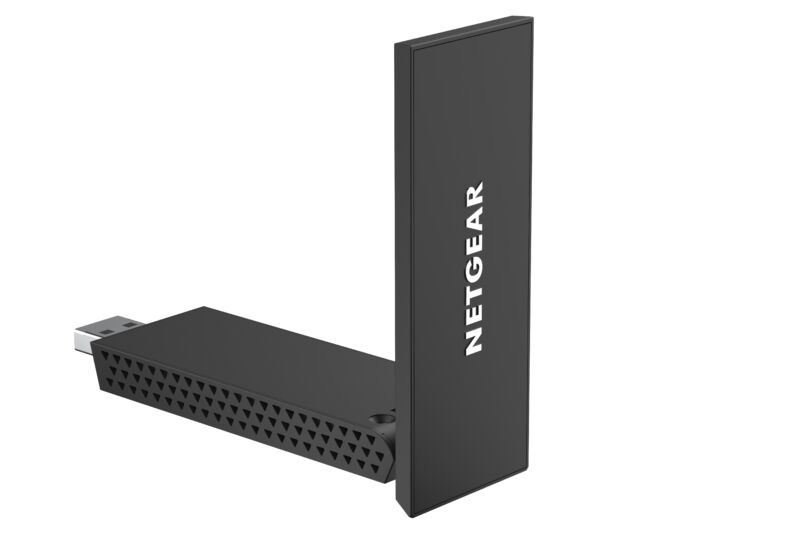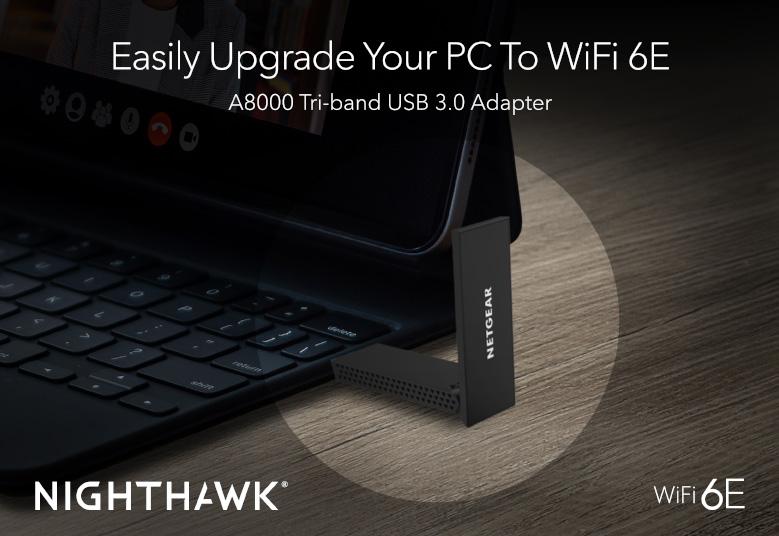
Wi-Fi 6E products are available to consumers today, but you probably wouldn't know it if you looked around the average household. Although supporting gear rolled out over the past couple of years, component shortages, satisfaction with Wi-Fi 6, and the impending arrival of Wi-Fi 7 have led many to overlook the latest wireless standard. Netgear is trying to make adoption easier by announcing a USB adapter that brings Wi-Fi 6E to supporting systems via a USB 3.x Type-A connection.
Netgear's Nighthawk AXE3000 WiFi 6E USB 3.0 Adapter (A8000) announced Wednesday works with laptops and desktops. According to the San Jose, California-based company's announcement, it supports the 2.4 GHz band at up to 600 Mbps, the 5 GHz band at up to 1,200 Mbps, and the 6 GHz band at up to 1,200 Mbps.

The adapter uses a flip-open antenna, and there's an optional cradle that can hold the adapter and connect to a PC via its USB-A cable, allowing moving the adapter for improved signal.

Of course, you won't be able to make the most of the adapter without a Wi-Fi 6E router. And you won't be able to use Wi-Fi 6E on a Mac.
Wi-Fi 6E is a boost over Wi-Fi 6; it leverages the 6 GHz band in addition to the 2.4 and 5 GHz ones for less congestion and lower latency. However, shorter wavelengths mean it maxes out at shorter distances, especially if obstructions, like walls, come into play. Your performance will also rely on the max speeds you can get from your Internet provider.
For the forward-looking, the Institute of Electrical and Electronics Engineers is expected to finalize the Wi-Fi 7 spec by 2024, with players like Intel predicting Wi-Fi 7 PCs coming out by 2025. Wi-Fi 7 should improve on Wi-Fi 6E by bumping max channel bandwidth from 160 MHz to 320 MHz and increasing throughput by up to 20 percent as it moves from 1,024 quadrature amplitude modulation (QAM) to 4,096 QAM and introduces multi-link operation (MLO) and multi-resource unit puncturing.
All that said, a simple way to add Wi-Fi 6E to your PC may not be enough to warrant moving to the standard. But for those who have the gear, space, and interest to make the upgrade worth it, Netgear said it would release the AXE3000 this month at a $90 MSRP.
reader comments
95